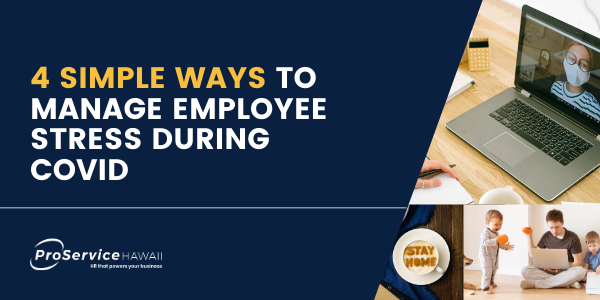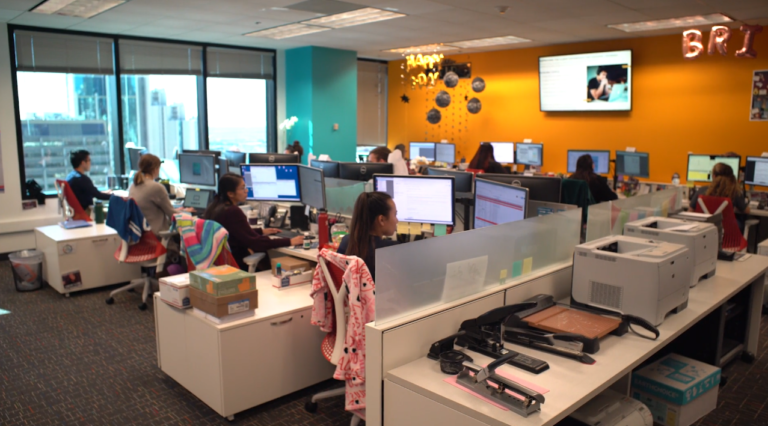4 Simple Ways to Manage Employee Stress During COVID
The COVID-19 pandemic has upended virtually every aspect of life and work. Employees are being asked to do more…often, to go above and beyond the call of duty.
All of this, on top of their own to-do list to stay healthy and keep their families safe. It’s a lot. That’s why employee wellbeing and workforce resilience was the hot topic on the table for discussion in our latest webinar, The Here and Now on Employee Wellbeing, which featured:
Here were our top insights and takeaways:
1. Create space to make connections
Right now people’s sense of belonging and sense of place is dispersed. With that grows a disconnect and a sense of loss for many employees. Even so, our experts explained that there are ways working virtually can actually create more opportunities for connection…if you make space for it.
To foster connection they recommend having daily touchpoints with your team to create an opportunity to check in on them—even if it’s to say hello! It could be as simple as 15-30 minute morning briefings, or virtual lunch-and-learns, or Friday pau hana get-togethers. Keeping human connection open through these virtual avenues is the new open-door policy.
They also reminded us to have fun along the way! Insert Zoom background challenges or ice breakers before or after meetings to mix things up. Take the opportunity to learn about your employees and do your part to prevent stress and burnout among your team.
2. Advocate for balance and boundaries
Going into an office created clear boundaries between one’s work life and one’s home life. Now that this reality has disappeared for many employees, we’re seeing that remote work, while desirable, can be difficult to do. Just because your employee can work from home, doesn’t mean they can work from home.
Our experts encouraged employers to be flexible with their employees and advocate for balance and boundaries. Some suggestions discussed included making it a rule not to email after hours (as to not disrupt family time) or to have meeting free lunch hours so working parents can prepare lunch for children who are distance learning.
3. Communicate with empathy, always
There’s a lot going on today. Looking at the way you communicate with your team is key, especially the way you deliver the what and how. Jackie Ingamells shared these 3 elements to meaningful communication with your employees:
- Transparency – Be honest and clear about why you’re reaching out and with the information you are giving.
- Empathy – Overlay your conversations with compassion. Listen intently.
- Timing – Everyone is dealing with a lot outside of their own scope. Keep things purposeful, relevant, and simple.
4. Don’t forget to nurture your leaders
Leaders will make or break how an employee feels about where they work. Don’t just assume that your managers know what to do because they’re in positions of authority. Take time to slow down and nurture managers and leaders on your front-lines, too, so they are well-equipped to provide great care for your employees.
Some best practices to consider:
- Double down on training. Having an information exchange or a forum for learning is necessary for your leadership. Beth Whitehead shared that every week she sends out a leadership lesson to all her managers. Develop training that is both humble in its approach, yet impactful in its execution.
- Check-in and share appreciation. Ask managers how they are doing or feeling. What’s been working? What’s not? Get their feedback and don’t forget to acknowledge the ways (big or small) they’re hustling for your business. These signs of acknowledgment goes a long way.
In conclusion…“be like water”
Bruce Lee’s famous quote really applies here. All the training and planning in the world won’t always do your best intentions justice. When it comes to employee wellbeing, stay flexible. Just as the COVID crisis is fluid every day, you must be too. Adopt the concept of impermanence and be forgiving with yourself, your leaders, and your employees for we are all in this together.









